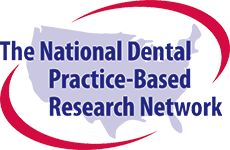Mission, Vision, & Goals
What Makes for a Successful PBRN
A PBRN can be defined as a group of outpatient care practices that, although primarily devoted to providing health care services, has affiliated as a group – and typically with an academic health center – to investigate research questions and to share experiences and expertise. The network constitutes an organization that transcends any single research project.
The nation’s network is an effort to help dental professionals directly improve the efficiency and effectiveness of dental care. Essentially, it is research done about and in the “real world” of daily clinical practice. Unfortunately, much of dental research has not had an immediate applicability to daily dental practice. In fact, some have referred to much of the dental research conducted as “scientifically valid, statistically significant, but clinically useless”. We would like to change that.
Successful networks have solicited research questions that participating practitioners feel are directly relevant to daily practice. Network clinicians want to do research that will have an impact on patient health outcomes, patient satisfaction, or the efficiency of the daily delivery of care. Research focused on disease progression or its treatment also is of interest because it is focused on improving patients’ health outcomes.
Experiences from PBRNs suggest that setting objective, staged, achievable goals will create a successful track record, leading to long-term success of the network. Because of this, the National Dental PBRN dis-aggregates proposed projects into defined stages, using objective benchmarks that will be monitored by and communicated to network participants regularly.
Successful networks recognize members for their participation and accomplishments. Network practitioner-investigators will be recognized in publications and reports from the network, be provided a framed certificate suitable for placement in their office’s waiting room, and will be recognized on the National Dental PBRN web site. Receiving Continuing Education credit for certain training and orientation modules also serves as a form of recognition.
Regular contact is important to the success of PBRNs because it socializes members through observation and imitation. Regular contact will be achieved by updating network practitioner-investigators and providing network news on at least a bi-monthly basis, depending upon the network activities, and by annual face-to-face meetings.
One characteristic of successful PBRNs is that network practitioners be seen as, and involved as, more than data gatherers. If practitioners provide input on the design, conduct, and/or analysis of studies, and receive feedback on these ideas, the network is more successful and productive. Success is enhanced if the tangible application to their practice is evident, and patients in their practices may realize improved outcomes as a result of the practice’s participation in research.
An important feature is that academic researchers and practicing clinicians engage in close collaboration at each stage of the research process. Recognizing this, we included a question in our enrollment questionnaire regarding ideas for future PBRN research projects. Ideas will continue to be elicited using periodic written and electronic communications sent to PBRN practitioners, and at annual meetings.
If oral health research advances are to be regularly infused into daily clinical practice, dental professionals must see the relevance of these advances to their daily practice. Engaging clinicians in research and in the excitement of discovery, requires leadership that our National Dental PBRN administrative structure provides. Practitioner-investigators must understand the fundamentals of clinical research, see how research design determines what conclusions can be made, and how these conclusions affect how they treat their patients. Our experiences and those from other PBRNs suggest that the optimal strategy is to build upon clinicians’ observations from their own practices, get them engaged in discussions with other PBRN members about scientific approaches to answer questions that they feel are important to their daily practice, and then establish scientific consensus that they feel is clinically meaningful and relevant to their daily clinical practice.
